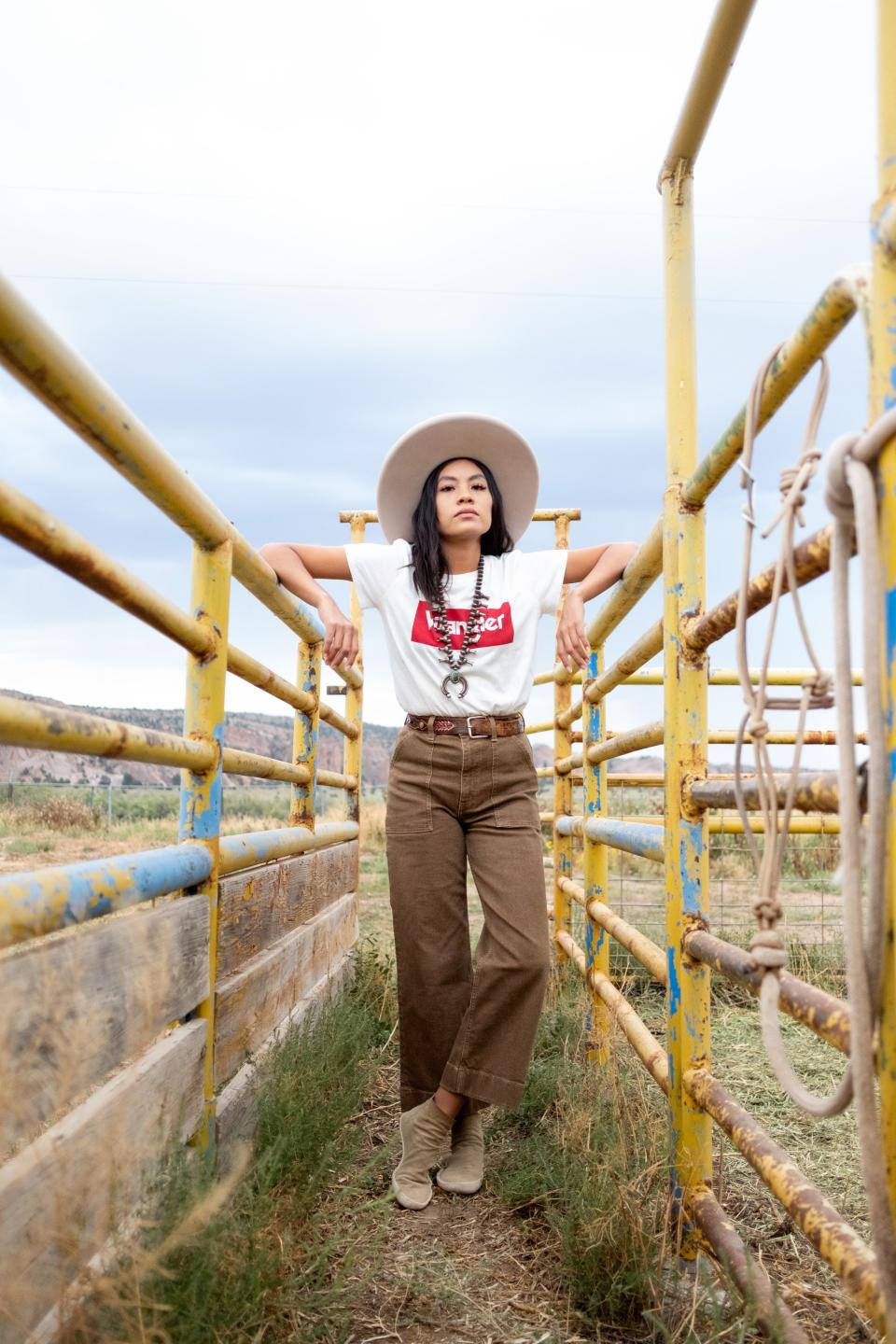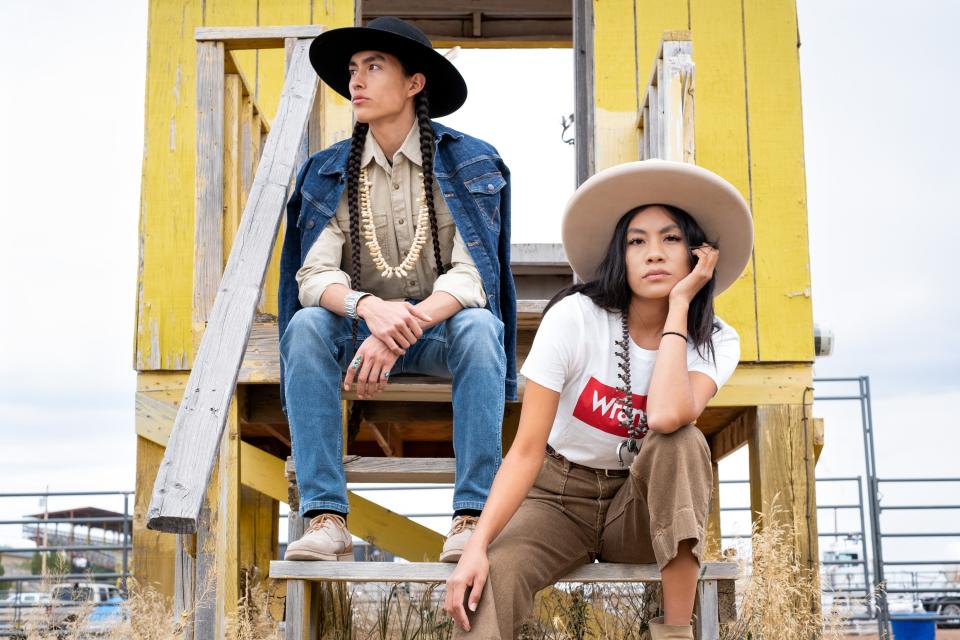Meet the Navajo Multi-Hyphenate Championing Indigenous Fashion
Shondina Lee wears many hats. The Navajo creative—who is based in (and grew up on) a small community on the Navajo reservation—currently splits her time as a creative director, model, stylist, and photographer. The multi-hyphenate’s latest project, however, is a special collaboration with Wrangler: She and the American workwear brand are releasing a series of images this week that explore her community’s roots, as well as her very personal relationship with Wrangler’s denim pieces.
Wrangler holds a special meaning for Lee, who has modeled for the brand before: She and her community grew up wearing the brand’s jean pieces on the rez, which often hosts various rodeo events. “My late grandfather was a rancher, and he was always wearing his Wrangler jeans. I’m certain that was all he owned,” Lee said. “I noticed that a lot of older Navajos still rock their Wranglers to this day.”

The new visual partnership was shot on location at the Navajo Nation Fair in Window Rock, Arizona, an annual celebration of indigenous culture that Lee regularly frequents. “There’s this old photo that I saw of some people at the Navajo Nation Fair, and they were dressed to the nines. I love how that used to be a thing, and I so want that to become a thing again,” she said, adding that the upbringing also influenced her own personal style, which has Western elements. “I love to incorporate where I come from into my style. It’s amazing when someone can tell where you’re coming from or who you are, which is partly why I always wear turquoise jewelry or my moccasins,” she said.

Lee also enlisted two co-stars to appear in the Wrangler series alongside her: Navajo cowboy Creighton Curley, and model Phillip Bread (who is Comanche, Kiowa, and Blackfoot, and was profiled for Vogue earlier this year). “Phillip does a beautiful job representing his people and culture. He’s so confident and secure with who he is,” Lee said. “I wanted to include someone like that because maybe it’ll help inspire other indigenous boys and men out there to be proud of who they are.”
Outside of her new Wrangler partnership, Lee has been a fashion plate in her own right for quite some time. In 2016, she launched her own blog, She and Turquoise, which is focused on Lee’s personal style. (It has now grown to over 16,000 followers on Instagram.) “It really started out as something I did just to get out all the creative energy I was feeling at the time,” Lee said. “Whenever an idea would come to me, I didn’t always have someone around who could stand in front of a camera. Often times, I was using a tripod or having someone else take the photo. I guess that’s when my amateur modeling career started.”

Eventually, her Instagram imagery began catching the eye of small businesses who send clothes for Lee to take photos in. On her own accord, though, Lee often wears and promotes indigenous-owned brands as well. She counts Ginew, an Ojibwe-made denim line, as a favorite. She’s also worn pieces from Orenda Tribe, a brand owned by Navajo artist Amy Yeung that makes handmade garments made from upcycled materials; rocked bags by the indigenous designer Maya Stewart; and she’s also slipped on streetwear from OXDX, a native-owned brand out of Tempe, Arizona.
As she continues working on new projects, Lee hopes to continue using her platform to spotlight indigenous stories, as well as fellow indigenous fashion creatives too. “I know the struggle and what it’s like to be indigenous, so I can’t help but support indigenous brands and businesses,” she said. “We’re all fighting the good fight. We’re in a good time right now where we’re all supporting each other, even if we’ve never met in real life. It’s mind-blowing to see all the waves the indigenous fashion community is making—and it’s only going to get bigger and better.”
Originally Appeared on Vogue

